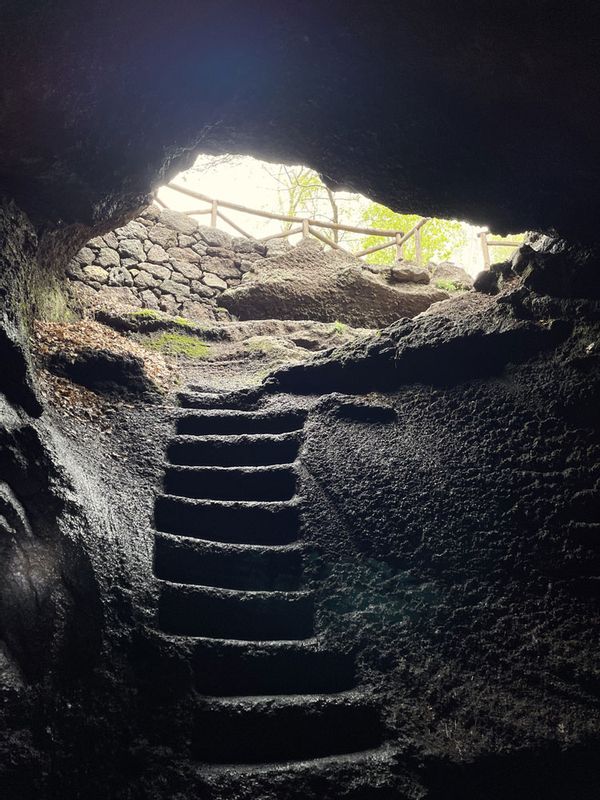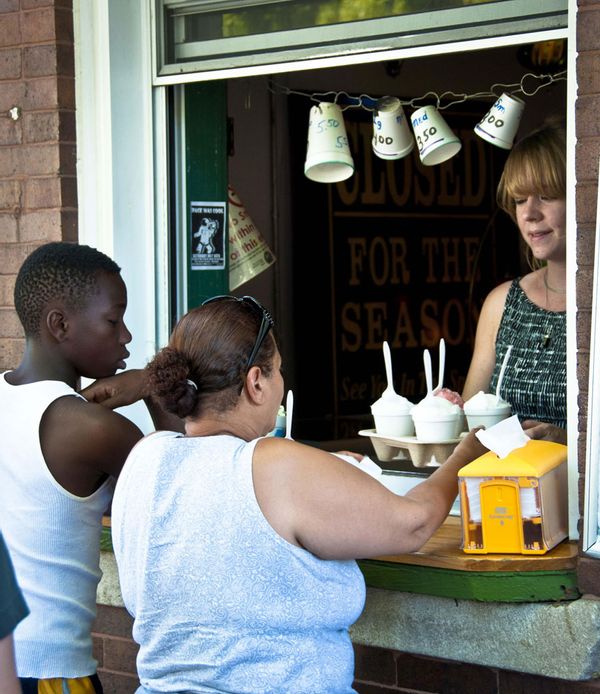How the Mount Etna’s icy caves — and New Jersey — gave America its sweetest summer treat
It’s a postcard, 80-degree Chicago afternoon as I park my Divvy bike and cross the street to line up at Miko’s Italian Ice in Chicago’s Irving Park neighborhood. Line chatter considers the more exciting of the dozen-plus flavors on offer: “Ooh, they have hibiscus!” But today I’m craving the tart-sweet classic: lemon ice. The first fluffy spoonful exudes the bracing essence of a lemon as it melts on my tongue.
Summer is here.
Like the lengthening days, tinny chimes of the ice cream truck, and clink of baseball bats at the park, the seasonal return of Italian ice also known as water ice (or “wooder” ice, if you’re a Philadelphian), is a harbinger of American summer. For those of us who make our homes in northerly climates, the fleeting nature of the warmest season sweetens the joy of this frozen treat all the more.
“It’s usually nonstop for us in June, July and August,” said Miko’s owner Zach Roombos. “It’s really just a matter of, we run out of stuff and just keep making it all summer, seven days a week from 12 to 10.”
Open since 1997, this Windy City icon is a relative baby in the century-old tradition of American Italian ice. Indeed, New York’s loquacious Benfaremo, the Lemon Ice King of Corona, has been slinging Italian ice in Queens since 1944. Pop’s Italian Ice started as a push cart in South Philadelphia in 1932, some 17 years after Caterina DiCosmo debuted DiCosmo’s Italian Ice at her grocery store in Elizabeth, New Jersey — which might be the country’s oldest commercial Italian ice operation.
With such an ancient and well-traveled history, it’s hard to pin down the most “authentic” American version of Italian water ice, though one could reasonably point to the slow-freezing, soft and whippy microbatch versions at places like DiCosmo’s.
All shaved ice desserts share ancient roots in the semi-frozen dessert known as granita, which originated roughly 4,000 years ago in then Arab-dominated Sicily. Couriers would harvest snow from the volcanic Mount Etna’s frozen peaks to use for cooling royals’ drinks. They’d pack the snow and ice into tunnels carved out from past eruptions to keep it from melting. Then they’d hoist it out, cut and pack it into jute bags lined with straw, then haul it down the mountain to cities like Catania and Messina, where people scratched off bits of ice and flavored them with fruit juices and syrups. As granita migrated across Sicily and Italy, it took up flavor variations like pistachio and coffee before eventually making its way to the United States with Sicilian and Italian immigrants.
With such an ancient and well-traveled history, it’s hard to pin down the most “authentic” American version of Italian water ice, though one could reasonably point to the slow-freezing, soft and whippy microbatch versions at places like DiCosmo’s. In the early days, the process began each morning with DiCosmo’s founders cutting hundreds of lemons out back before adding the juice, sugar and water to the machines and turning them by hand. John DiCosmo, grandson of the founders, explained the still unchanged process in a New York Times interview in the ’90s. (The company also outlines it on its website.)

“We can only make 10 gallons at a time,” John DiCosmo told the Times. “We put stainless steel canisters in our old wooden barrels, with ice and rock salt in between the two. Then I pour a mixture of fruit juice, sugar and water into the canisters. Metal dashers are lowered into the liquid, and they mix it back and forth for about 40 minutes. No ice is added; it freezes slowly because it’s packed in ice.”
Over in South Philly, Pop’s ices sport a slushier, less firmly set style that’s become the favorite in the city and surrounding areas.
Want more great food writing and recipes? Subscribe to Salon Food’s newsletter, The Bite.
“We do it with love,” said Linda Raffa, Pop’s chief operating officer. The 73-year-old is the oldest of founder Filippo “Pop” Italiano’s six grandchildren. All six of them run the seasonal shop together, which now has two locations.
“Every one of us put ourselves through college working there,” she said. “We all have full-time jobs; we keep this going just for tradition.”
On especially sticky, 90-degree days, Italiano’s old electric machines almost constantly churn out the classic lemon water ice he started the business with. Other beloved flavors include mango, pineapple and chocolate, especially in the cooler months.
Now New England is on the cusp of peach season, which means customer calls to the shop have already begun: “When’s peach gonna be ready? When’s peach gonna be ready?” Raffa said. “I have my favorite peach orchard that I go up to near Maine; we use [New] Jersey peaches. Everyone’s just waiting patiently for that announcement.”
 Mikos’ window (Photo courtesy of Mikos’ Italian Ice)
Mikos’ window (Photo courtesy of Mikos’ Italian Ice)
Back in Chicago, Miko’s Italian ices are churned in an ice cream maker, which aerates mixtures like horchata, guava and the beloved mango, giving them a fluffier texture similar to DiCosmo’s. Like the others, Miko’s is a family affair, started by Roombos’s father Miko “Mike” Roombos and his uncle Rick.
On Labor Day weekend 26 years ago, the brothers, who worked in rehabilitation and real estate at the time, were installing drywall inside a Bucktown fixer upper on a blistering 95-degree day.
“There was an Italian ice place around the corner, so they said, ‘let’s go get something,'” Roombos said. “They pull up and there’s a sign that says closed for the season — on a 90-degree day! So they started messing around with little home ice cream makers and testing flavors on family and friends. We didn’t really have any history before that with Italian ice.”
“Because people haven’t had it for a few months, it creates a need for it in spring when we open.”
Now Roombos is serving Italian ice to return customers’ kids and their kids across a season that stretches well into October and begins earlier and earlier. Indeed, Roombos usually waits until the end of April, but this year he declared it Italian ice season on April 1.
“It ended up being kind of crummy, but still people came out in force in their coats and hats and scarves to support us,” he said. “I think when we open they see it like the light at the end of the tunnel. Summer’s finally coming.”
Pop’s opens its doors even earlier, in March, or whenever the city sees a string of 50-degree days.
“This year we opened in February because we had a 70-degree day!” Raffa said, adding that the shops are often busier on 50-degree March days than 90-degree days in September. “Because people haven’t had it for a few months, it creates a need for it in spring when we open.”
There’s joy in the wait, in knowing that, like summertime, these storefronts will return year after year to dispense their timeless, icy delights in little white cups.
“At my age I don’t get to be at the window very often anymore,” Raffa said. “In the old days I was there from 4 in the afternoon till 11 at night when we closed. And my happiest moments were to watch customers take that first sip of water ice, which put an instant smile on their faces.”
Read more
from this author

